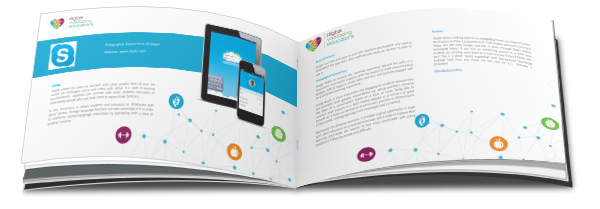1. Watch
Skype allows its users to connect with other people from all over the world via messages, voice and video calls. When it is used in learning environments, students can connect with other students, educators or interesting people who can help them to expand their horizons.
In the classroom, it allows students and educators to collaborate with other classes. Foreign-language teachers can take advantage of it in order to reinforce second-language acquisition by partnering with a class in another country.
3 Reasons to use Skype in the classroom:
- Skype in the classroom helps teachers to connect to guest speakers who can offer their expertise during a Skype lesson with a class.
- Teachers have already created thousands of lessons on Skype in the classroom. Taking part in one of these is a nice way to start using Skype as part of your lesson plan. If you have an idea of what you’re looking for you can search for lessons by keyword
- A Skype lesson is a fantastic way to engage your whole class. Students can be assigned different roles to keep everyone involved throughout the lesson. These can include greeters, interviewers, bloggers, timekeepers etc.
Here are just a few of the possibilities with Skype:
- Virtual Field Trips – teachers and learners can go on virtual field trips and organise virtual tours
- Skype Lessons – teachers can access a huge array of skype lessons already developed and waiting to be used
- Skype Collaborations – skype offers educators the opportunity to create connected classrooms. See ouf YouTube channel for great examples of elementary and primary schools connecting. Principles are the same for VET and HEI.
- Mystery Skype – great for cultural awareness and injecting a bit of fun into the class/lecture room, learners can play games with other classes similar to theirs in different parts of the world.
- Guest Speakers – great way for teachers to engage expert speakers from around the world and have them give presentations to their students.
2. Read

Interested in finding out more about Skype and how you can use it your class or lecture room? We have completed a pedagogic assessment of this tool which details its strengths and weaknesses based on its potential for innovative teaching strategies.
3. Learn From Others
We collected and created some exemplar videos which include tutorials, case studies of educators using this tool and more. Click to watch and learn.
playlistId parameter cannot be found.
4. Get Started with Skype
Getting started with Skype in the classroom
Step 1: Visit https://education.skype.com to join.
If you have one already, simply use your Skype username and password to log in.
Step 2: Fill in your profile info
To help you connect with the most suitable classes and teachers you should also add your areas of interest, short bio, and upload a photo
Step 3 – Find a Skype lesson
Teachers have already created thousands of lessons on Skype in the classroom. Taking part in one of these is a nice way to start using Skype as part of your lesson plan. Once you’ve found a lesson you like, simply click the ‘Register for this lesson’ button. We’ll notify the person running the lesson and you should hear from them soon.
Step 4: Connect with other teachers and experts
Another way to start making connections is by messaging other teachers directly. It’s easy to do – you will find a message button on lesson pages and on every profile page.
You can also add someone as a Skype contact on his or her profile page. It’s important to connect on Skype so you can plan your lesson and have access to video calling. You can use instant messaging, or a Skype call, to chat once you’ve connected.
Step 5: Create your own lesson!
If you already have a fantastic idea for a Skype lesson and can’t find anyone else doing the same thing, then creating your own is simple. The more detail you’re able to provide to other teachers and classes in your lesson description, the more likely you are to make a fantastic connection. Include things like the subjects you’ll be covering, the length of the lesson and what your objectives are. A great image or video will also make it easier for other teachers to find your lesson. Once you’ve published your lesson using the simple form, other teachers will be able to find it, register to take part and get in contact with you.
5. Action – Ready to start your first Skype Lesson?
Complete our checklist to make sure you have everything you need to make it a success
Checklist for your first Skype lesson
- Skype is installed on your computer
- You’re connected to the internet
- You have a webcam, speakers and a microphone
- Your computer is connected to a projector or whiteboard
- You have added the person you’re calling as a Skype contact
- You have run a test call
- You have spoken about and agreed a lesson plan
- Your learners know what to expect and their roles.


